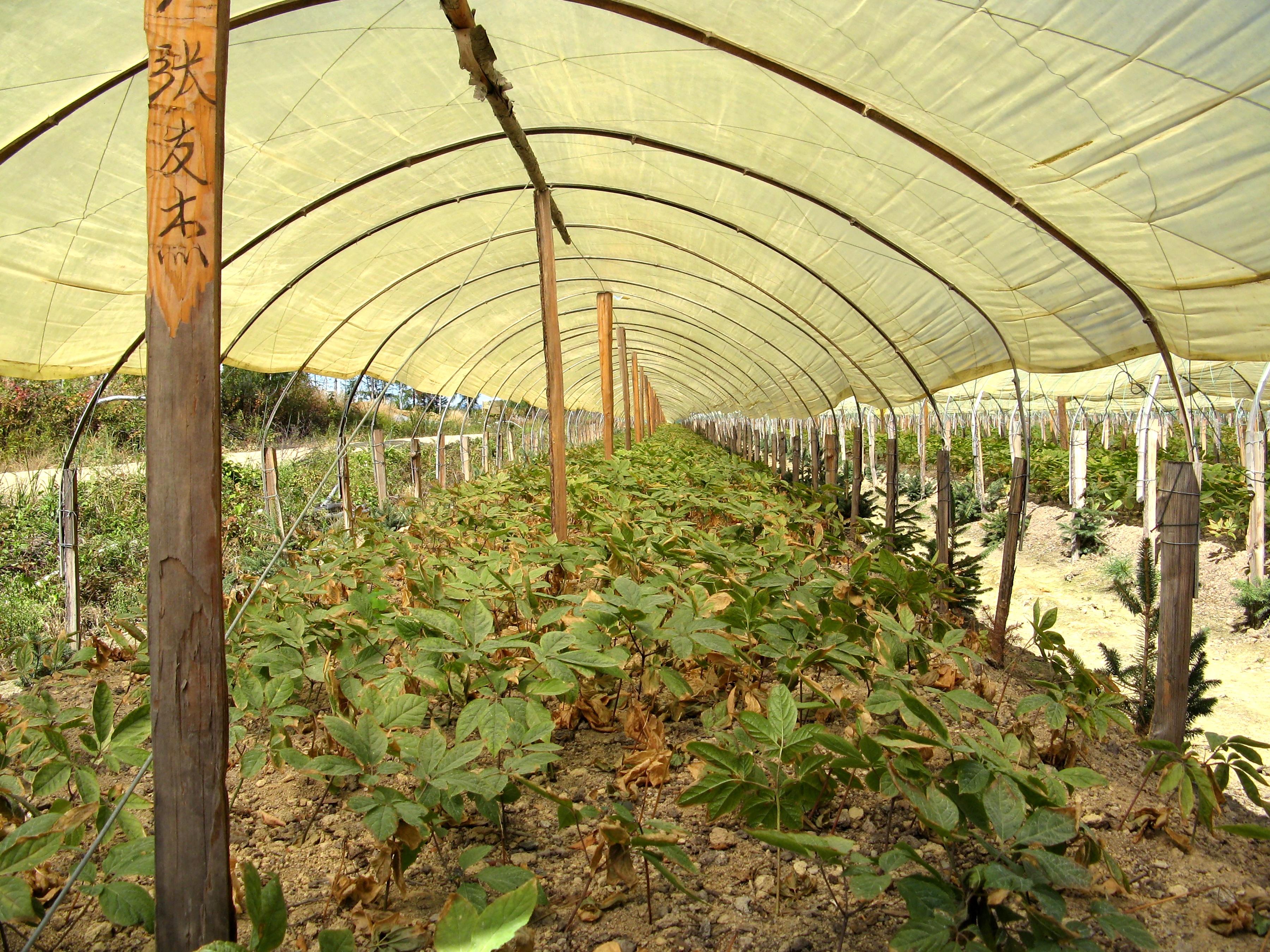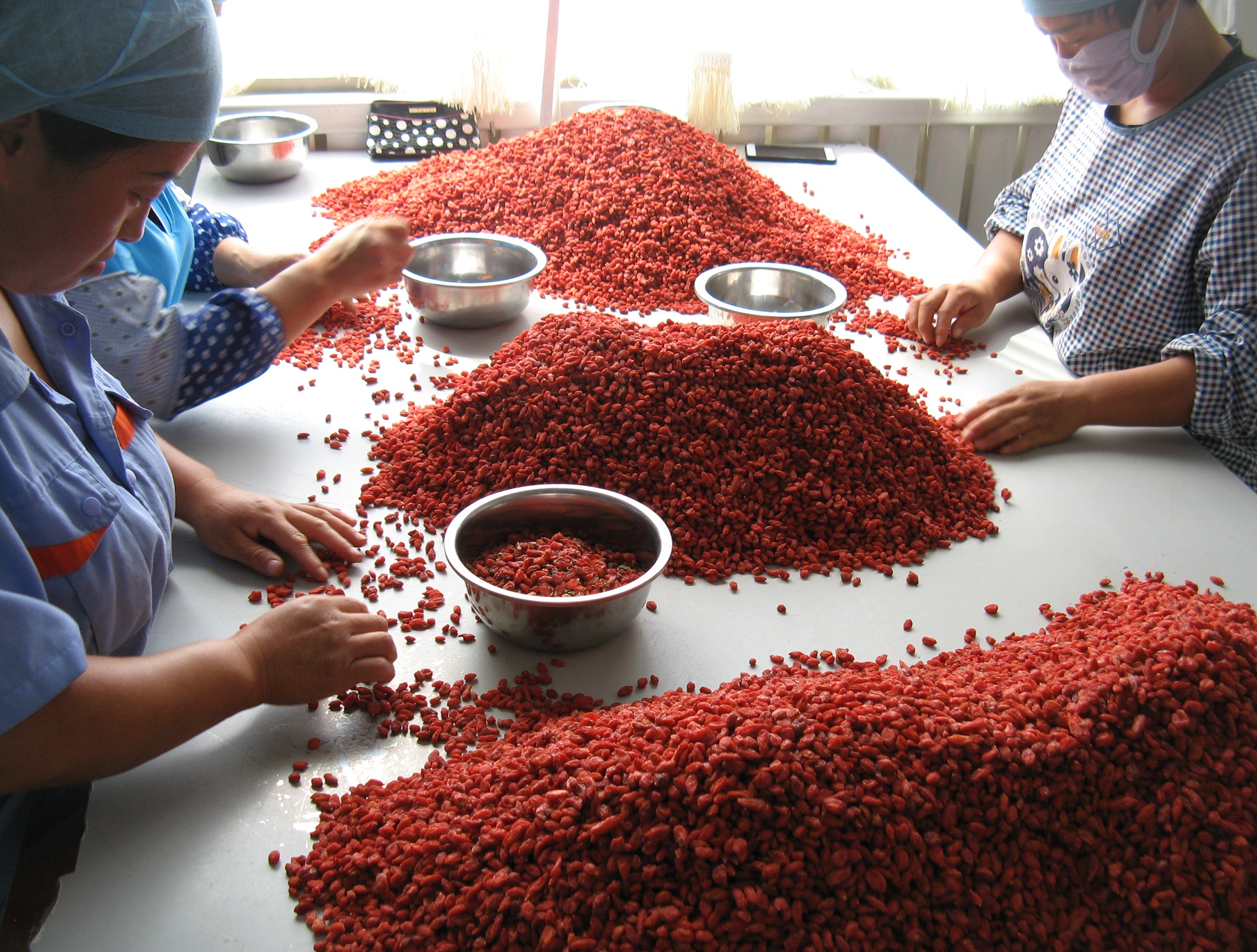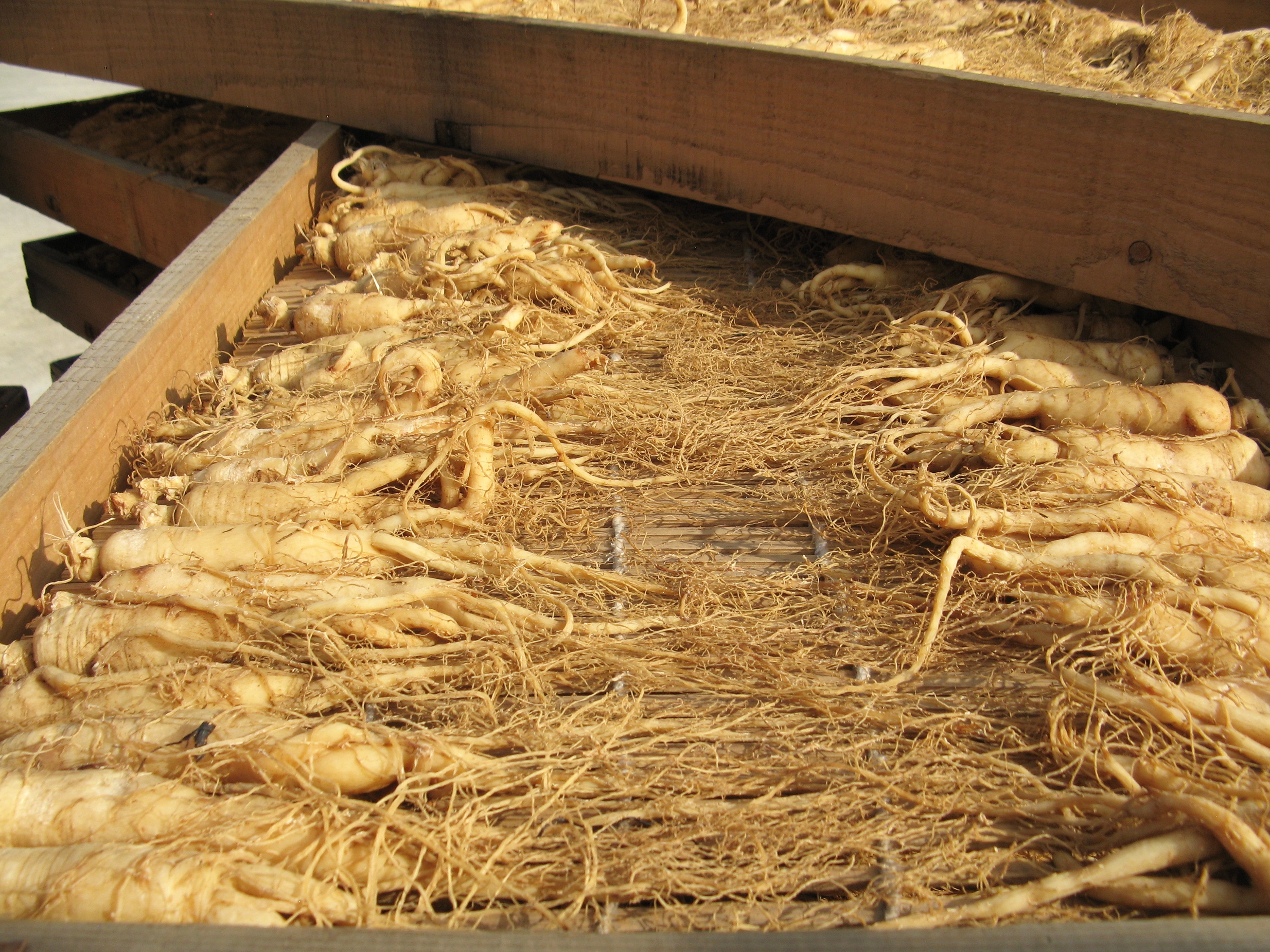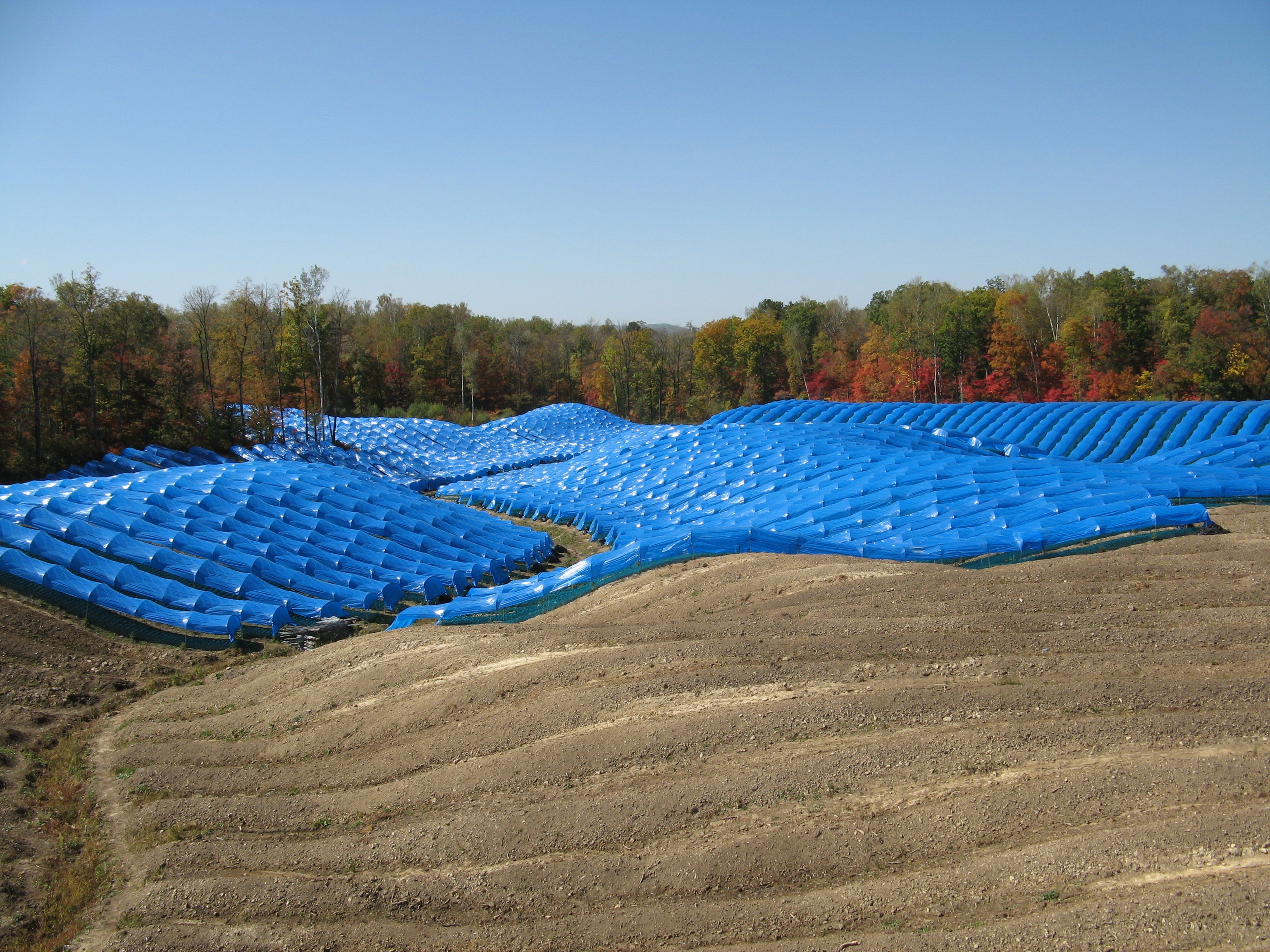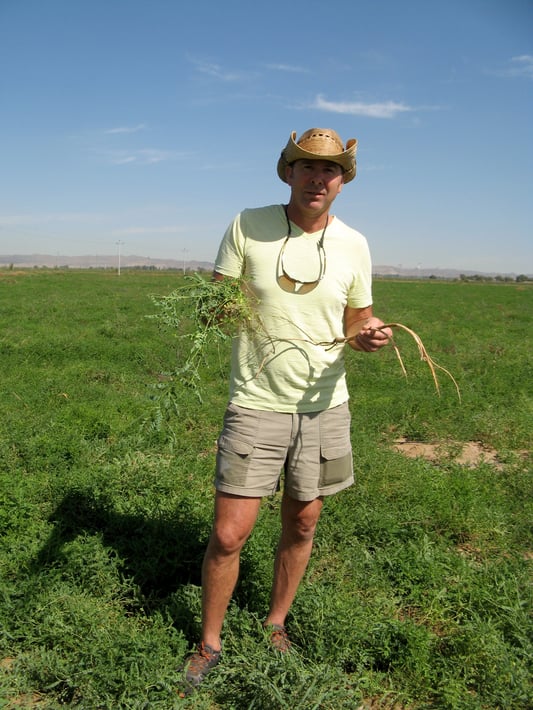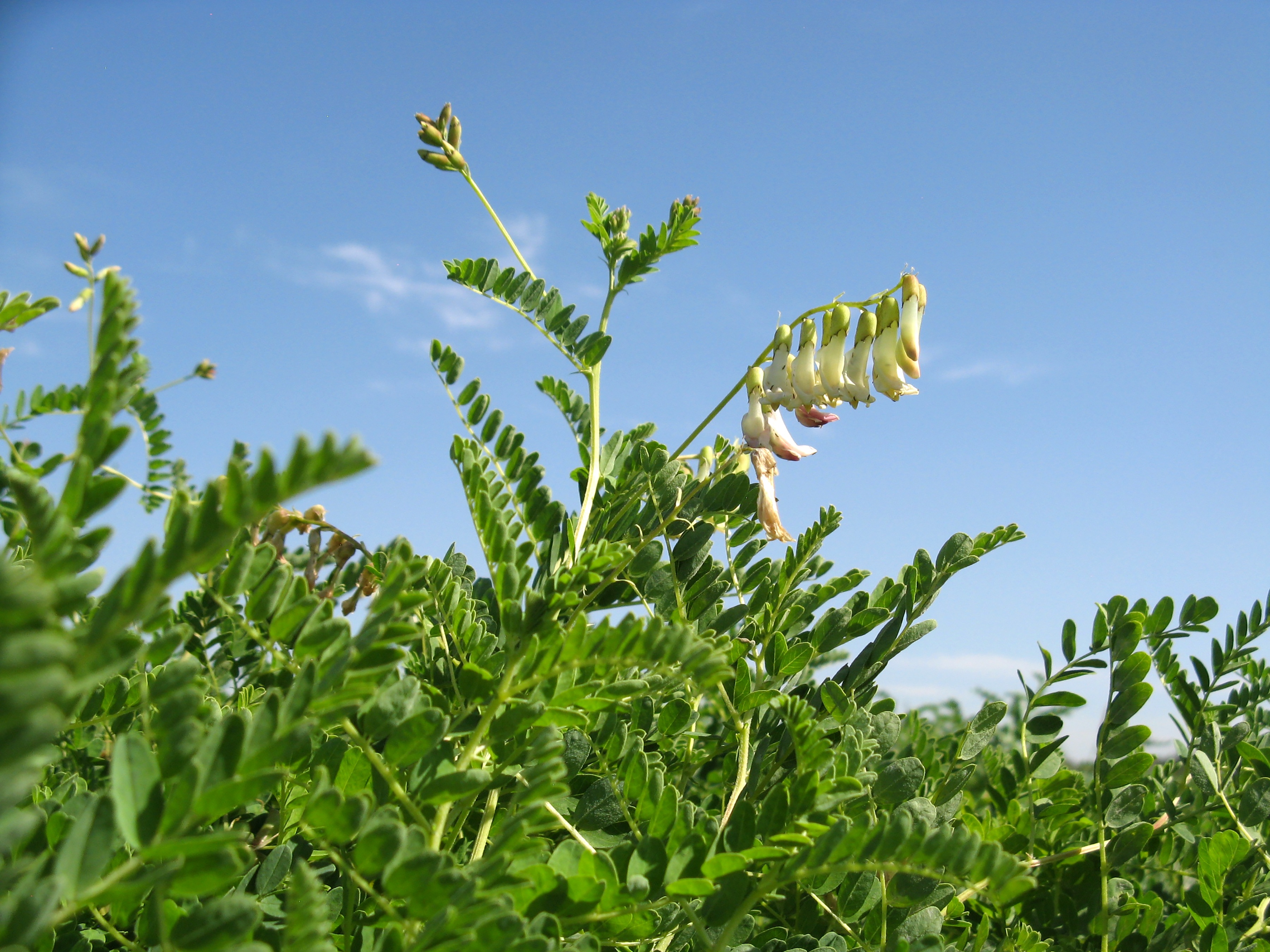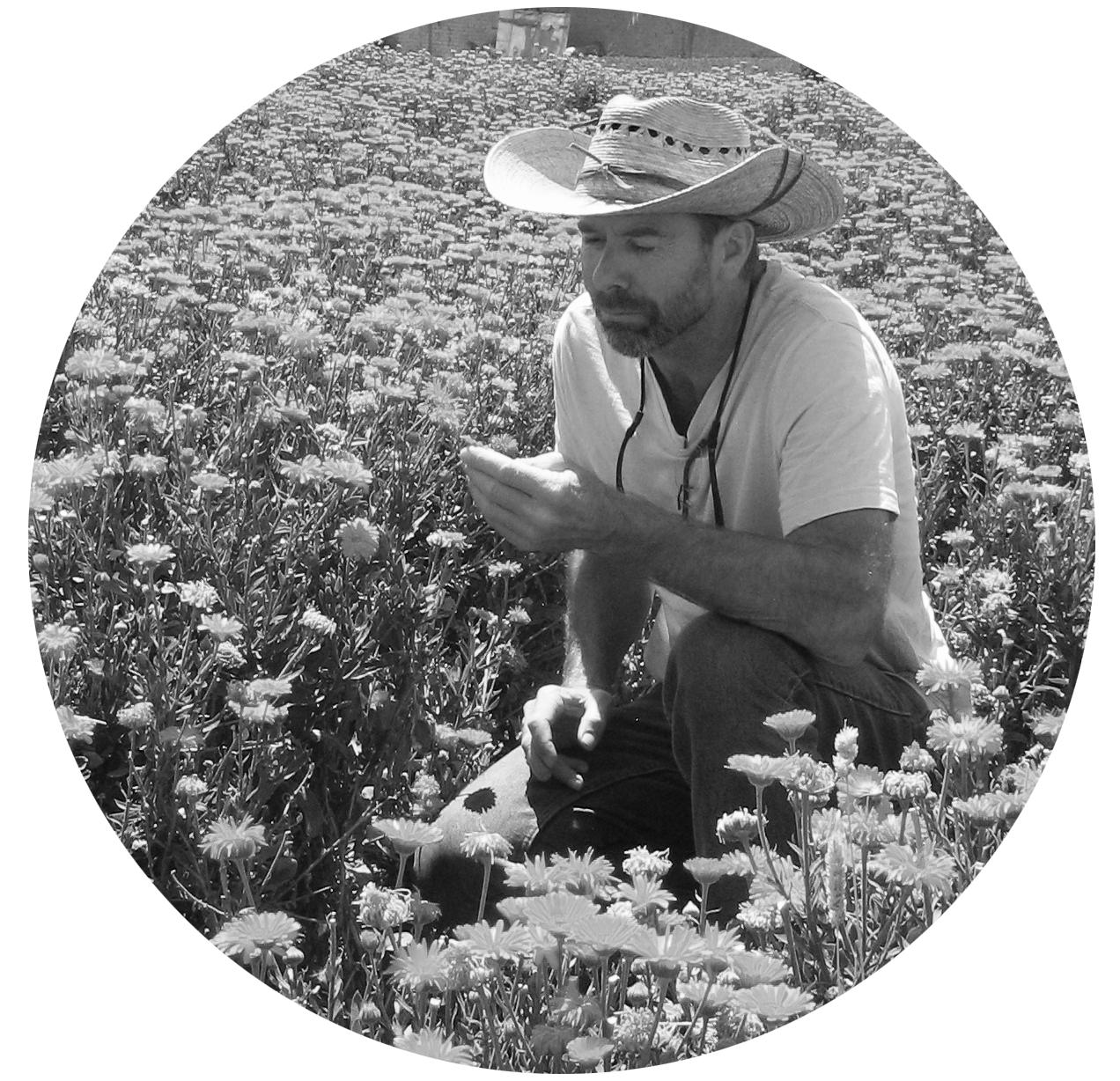Organic panax ginseng plants thrive under shade cloth.
Traditional Chinese Medicine (TCM) has been in existence for thousands of years. Although there are a variety of theories and different applications in TCM, they are based on the same principle—in order to have good health, people must cultivate and balance their Qi (ch’i). Qi, which translates to “life force” or “vital energy,” is thought to circulate through channels or meridians in the body in a dynamic manner. Practitioners of TCM believe that particular herbs are a powerful tool in creating “life force” balance.
Obviously, getting the highest quality botanicals is extremely important in TCM in order to assure efficacy. This is why, in our pursuit of the best botanicals for Mountain Rose Herbs, we travel to the regions in China where they are grown and processed according to strict TCM guidelines and following certified organic farming and wild collection practices.
These traditional methods are thought to go back to Shénnóng, the “Divine Farmer”, who allegedly tasted hundreds of herbs and imparted his knowledge of the medicinal value of these plants to farmers. These oral traditions on agriculture and plants were ultimately collected in a book called the Shénnóng Běncǎo Jīng, or The Divine Farmer’s Herb-Root Classic. This book lists each herb discovered by Shénnóng, along with their grade and rarity ratings, and includes hundreds of TCM remedies made from botanicals, minerals, and animals. It is considered to be the earliest Chinese pharmacopoeia.
Regardless of individual belief in the theories of TCM, many of the herbs used in Traditional Chinese Medicine are now accepted as useful botanicals in other countries’ herbal pharmacopeias. To ensure the safety and quality of these herbs, we have established longstanding relationships with trusted Chinese farmers. And as the International Procurement Manager at Mountain Rose Herbs, I regularly travel to China to visit our partner farms, factories, and collection sites to perform site audits and verify that their practices are in compliance with the FDA and our own stringent regulations.
Workers hand sorting organic lycii berries.
Why Go All the Way to China?
In some herbal traditions, and particularly in TCM, the geographic area the herb comes from is believed to be an indication of quality and efficacy. Also, in many instances, the traditional methods for growing, collecting, and processing the highest quality TCM botanicals have been refined over centuries. In some ways, you can compare it to growing, harvesting, and processing wine grapes. In both cases, the best product is thought to come from specific regions and the sophistication involved in site selection and processing methods. Our partnership with farmers there ensures these herbs continue to be consciously wild-harvested or organically cultivated.
We also feel it's important to honor the very specialized, traditional processing techniques that can directly impact the function of the herbs. The facilities in China that process TCM botanicals are highly regulated to ensure the herbs are prepared safely and according to these age-old techniques. For instance, our organic fo-ti root (Polygonum multiflorum), must be processed using a traditional method involving black soybean sauce, and farmers in the United States don’t typically employ these traditional Asian techniques. We are fortunate that these traditional cultivation practices are being kept alive with a new certified organic twist, and we are proud to help support the people and communities that continue to bring these valuable resources to TCM practitioners here at home.
Ginseng root ready for steaming and transforming into organic red ginseng.
Stories from the Field
Organic Red Panax Ginseng
Our certified organic red ginseng (Panax schinseng), the most revered TCM herb, is grown deep in the Changbai Mountains in Jilin Province, China. When I was there last, it was harvest time, and the fall colors were starting to run riot in the forests that surround the ginseng fields. This ginseng has a five-year growing cycle, and our farmers use hoop-house covers to provide shade for the slow-growing plants. The sun glinting off the hoop houses made for a surreal landscape.
Our organic red ginseng grows under the shade of hoop houses.
Everything here is done by hand—preparing the soil for planting, weeding, and harvesting—and the farmers have an extraordinarily intimate relationship with the plants and soil. As they handed me a piece of fresh ginseng root, they told me that this year’s yield was lower than usual due to a lack of rain during the growing season. When taste-tested, however, the samples were very rich in the slightly bitter, almost soapy flavor that I expect from healthy, high-quality roots.
After the harvested roots are taken to a certified organic processing facility, they are graded, washed, graded again, and then processed. Red ginseng goes through a steaming process prior to being dried, making the final product reddish in color and slightly translucent. This converts certain constituents in the root and is reported to make the rhizome more stimulating than white ginseng, which is dried without any steam treatment.
While I was at the processing facility, I got to eat and share ginseng tea with the factory workers. My two hosts were particularly excited about a dish of sugar-glazed ginseng that was abruptly placed on our table, and they told me to hurry and take some while it was still hot. Following their instruction, I used chopsticks to pick up a piece and dip it into a bowl of cool water. Why the water? It made the delicacy less sticky to chew. Yum! As you can see, making sure Mountain Rose Herbs’ imported Chinese botanicals meet all of our requirements has some excellent side benefits!
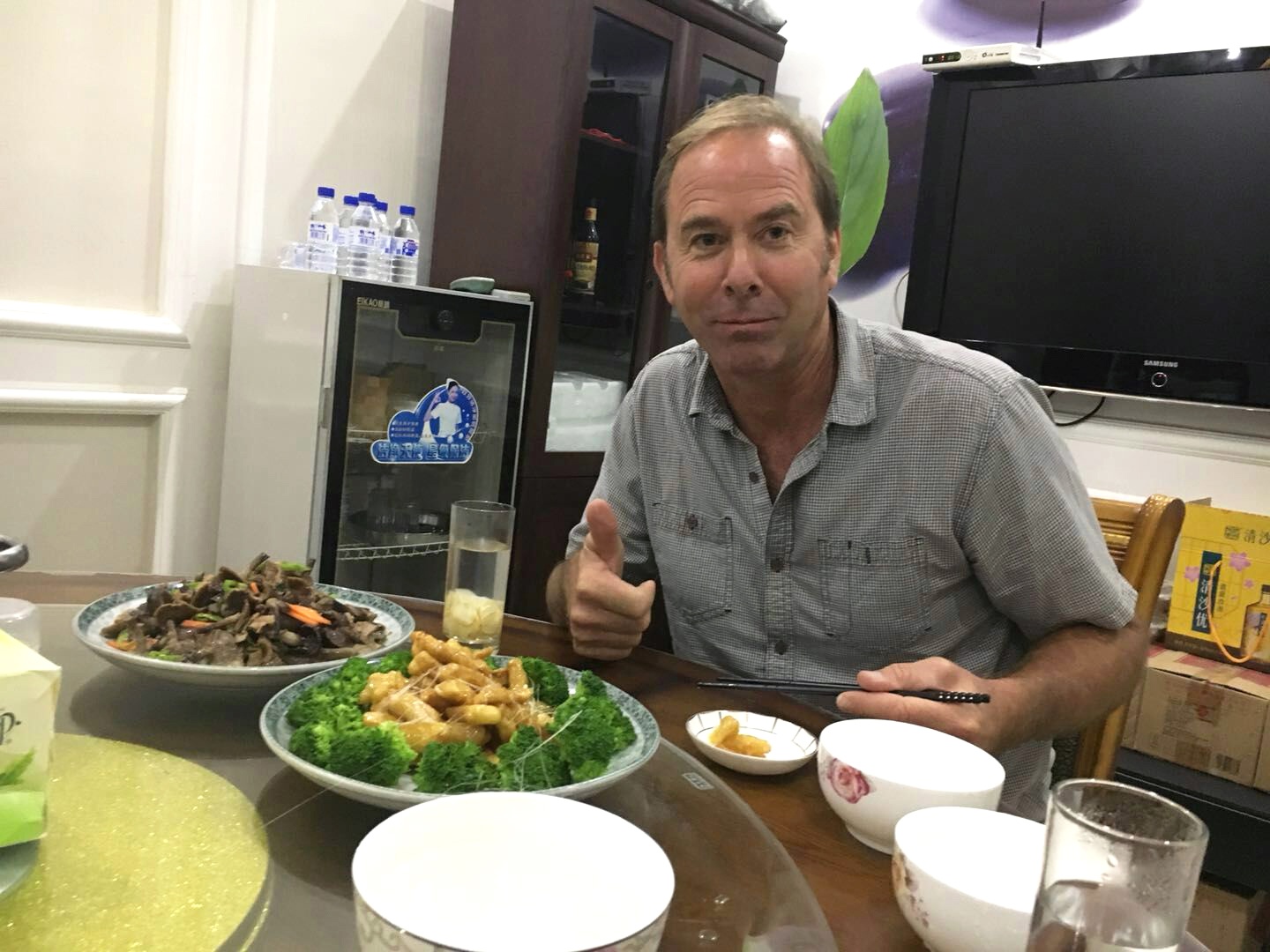
David enjoying a meal of sugar-glazed ginseng (fresh from the field!) at our processing facility in China.
ORGANIC astragalus root
In many instances, it's impossible to find enough of the most valued TCM herbs outside of China, especially processed in the traditional manner that is so important to practitioners and their patients. Some of the botanicals are only indigenous to the very specific areas where they are wild-harvested. And even when the herbs can be cultivated, they have been grown for generations in certain regions. So far it has proven difficult to duplicate their volume and success elsewhere.
A good example of this is our certified organic astragalus root (Astragalus membranaceus), otherwise known as Huang qi or “yellow leader”. The yellow roots of this legume have a sweetish flavor and are often brewed into a tea or added to chicken soup. The best astragalus is reported to grow in Inner Mongolia. So while I was in China, I headed there to there to get my feet on the ground at a certified organic astragalus cultivation project, a potential new farmer partner.
David shows off fresh organic astragalus root during his trip to Inner Mongolia.
I arrived just before harvest. The field was in good health, and the roots looked strong. The farmers were waiting for the colder weather, which would cause the plant to put all of its energy into the roots as it prepared to survive the winter. At that point, it would be ready for harvest. The farmers were hopeful that the weather would hold, as it’s a short window between the first frost and the winter storms that would prevent harvesting at all. Once harvested, they will dry and mill the root. So far, the project appears to be a success, and we’re looking forward to our first shipment arriving at our Eugene, Oregon headquarters.
Are Mountain Rose Herbs’ Chinese Products Safe?
From the beginning, we have been fundamentally committed to providing the safest and highest quality botanicals. That's why we have a supplier qualification program in place that complies with federal food and dietary supplement regulations. All of the TCM products we import, without exception, must pass through this comprehensive review program.
These imported botanicals must also pass through our rigorous quality control testing at our full onsite lab. Once the herbs are in our facility, we won’t make them available for sale until they are analyzed and tested for identity, microbial, and physical contaminants. Any material that fails to pass our specifications is rejected. It’s a labor-intensive commitment, but we believe this ongoing diligence is necessary in order to ensure that our TCM customers are getting the safest, highest quality offerings.
If you’d like to explore some of the important herbs traditionally used in TCM, here’s a good place to begin:
- Organic red panax ginseng root (Panax schinseng)—a.k.a. Ren Shen: TCM practitioners use this root as a qi tonic, stomachic, nutritive, stimulant, rejuvenative, and demulcent.
- Organic astragalus root (Astragalus membranaceus)—a.k.a. Huang Qi: This is the primary herb used in TCM, also as a qi tonic. It's also prized for its mild diuretic action.
- Organic lycii (goji) berries (Lycium barbarum): TCM practitioners use these berries as a blood and yin tonic.
Looking For More stories from our procurement team?
You may also be interested in:
- Sustainable Cultivation and Wildcrafting in Europe
- Organic Agriculture In Turkey
- Reviving a Forgotten Tea Growing Region
Organic astragalus flowers in full bloom.

